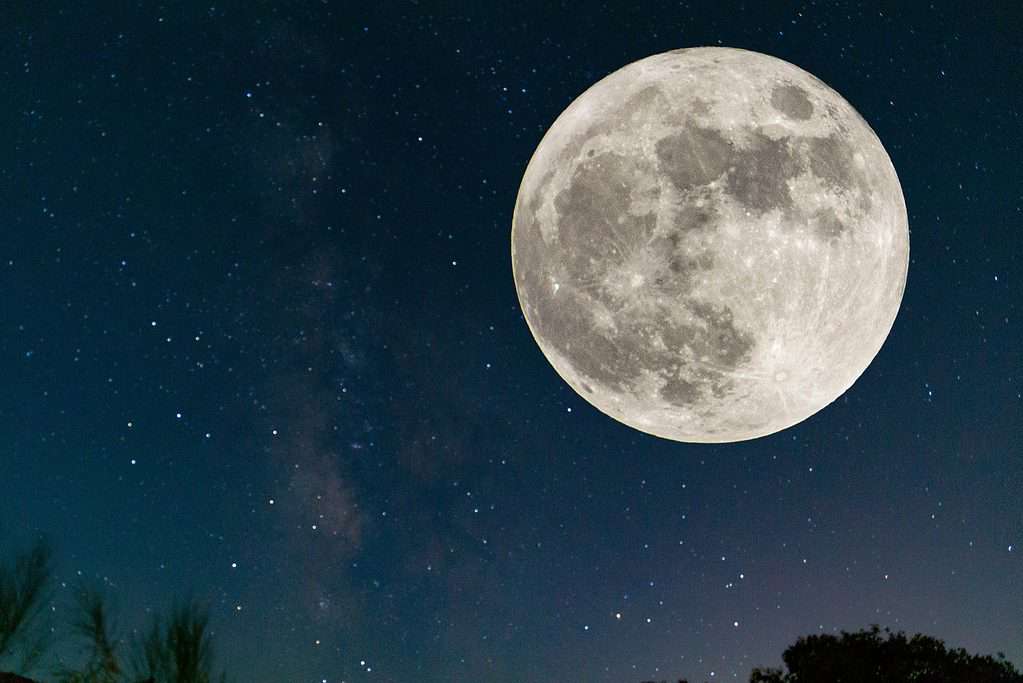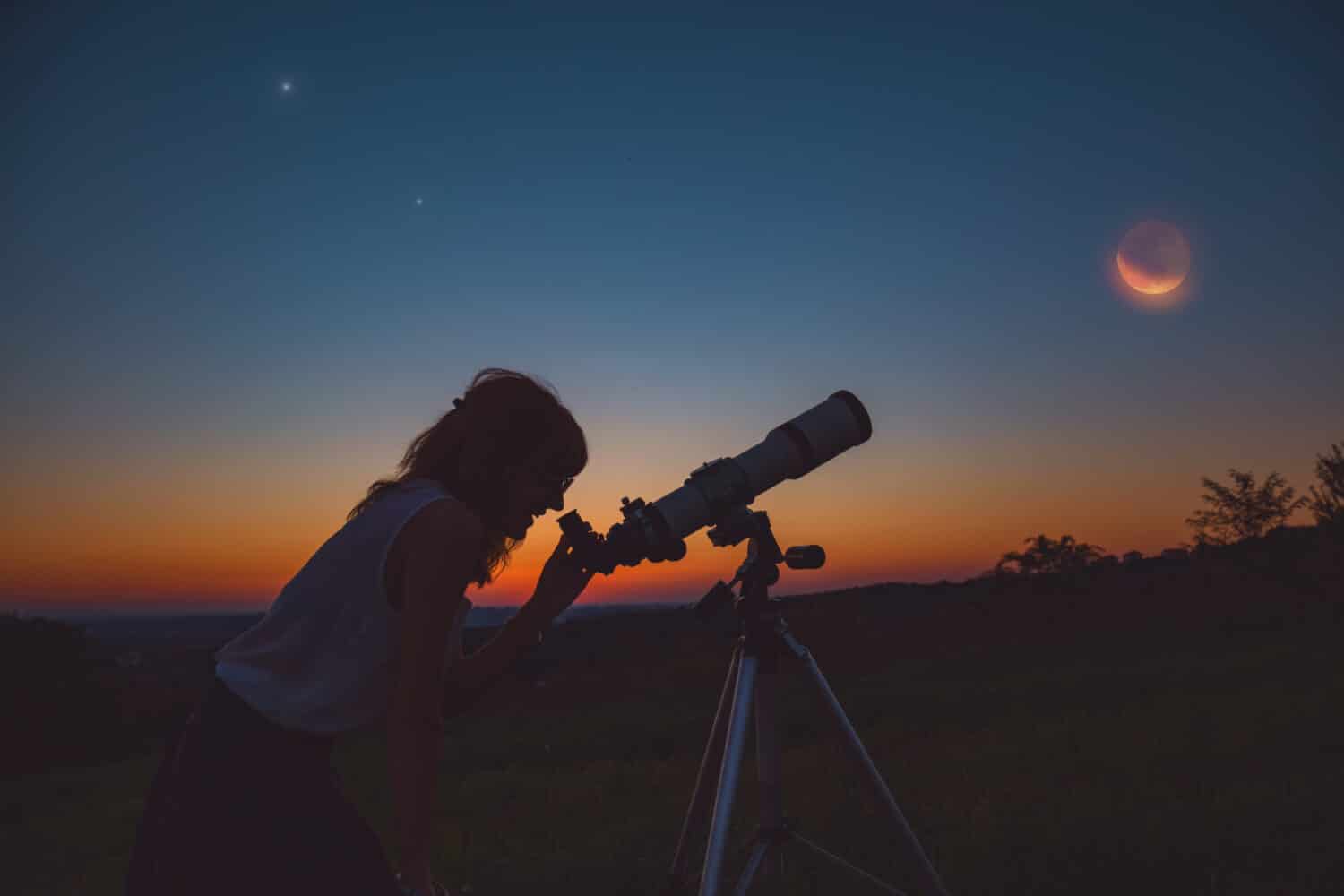Celestial events like eclipses are exciting occurrences that often bring humankind together. Lunar eclipses occur when the Earth’s shadow partially or completely darkens the moon. These astronomical events attract many viewers, space fanatics, moon lovers, and photographers alike. In fact, some people will travel hours upon hours to the perfect location just so they can watch the eclipse. Some will even photograph and videograph the event to commemorate and share it with others.
“Blood Moon” eclipses, or total lunar eclipses, happen when the Moon moves completely into the Earth’s shadow — so it’s covered in its entirety. At this time, the Moon often appears red due to the red and orange hues of the Sun passing through Earth’s atmosphere. A total lunar eclipse only happens once every few years, with the most recent occurring on November 8, 2022. We won’t experience the next “Blood Moon” eclipse until 2025.
Are you interested in catching the next total lunar eclipse? Don’t worry — you have plenty of time to prepare. Discover the various types of lunar eclipses and some tips for viewing the next “Blood Moon” eclipse.
Definition and Types of Lunar Eclipses
The Sun and Moon both experience eclipses. A solar eclipse occurs when the Moon blocks the Sun from view on Earth. This casts a shadow on the Sun, dimming its light (but not its power, which is why we can’t stare at it safely without wearing proper eye protection). A lunar eclipse, on the other hand, occurs when the Earth casts a shadow on the Moon. Lunar eclipses can only take place during a full moon.
There are three types of lunar eclipses: total lunar eclipse (“Blood Moon” eclipse), partial lunar eclipse, and penumbral lunar eclipse.

A lunar eclipse can only occur during a full moon.
©Fernando Astasio Avila/Shutterstock.com
1. Total Lunar Eclipse (‘Blood Moon’ Eclipse)
A “Blood Moon” eclipse, or total lunar eclipse, happens when the Earth’s umbral shadow darkens the entire Moon. This occurs when the Sun, Earth, and Moon are all physically on the same plane of orbit, with the Sun casting Earth’s shadow onto the Moon.
The total lunar eclipse gets its name “Blood Moon” eclipse due to the Moon’s bright red color. This results from some sunlight passing through Earth’s atmosphere and slightly lighting the Moon’s surface. Because red and orange have longer wavelengths, these colors are more visible than colors like blues and violets, which have shorter wavelengths. During a “Blood Moon” eclipse, the Moon will be full and appear orangish or reddish. The more dust or clouds in Earth’s atmosphere, the redder the Moon will appear from Earth’s view.
A “Blood Moon” eclipse only occurs once every one to three years and lasts a few hours. It endures all lunar eclipse stages, including the penumbral, partial, total, partial on the other half, and back to penumbral.
2. Partial Lunar Eclipse
As its name suggests, a partial lunar eclipse occurs when only half of the Moon is darkened by the Earth’s shadow. This happens when the Moon passes through a portion of the Earth’s umbra (the darkest part of its shadow). A partial lunar eclipse happens once every year or two, and you can view it with your naked eye.
3. Penumbral Lunar Eclipse
Penumbral lunar eclipses occur when the Moon passes through the Earth’s penumbral (the faintest part of its shadow). Because the Earth’s penumbral isn’t as dark as its umbra, these eclipses aren’t as easy to see with the naked eye, as the Moon only dims slightly. A penumbral lunar eclipse is a subtle celestial event that occurs at least twice a year. Many people won’t even notice when it’s happening.
The Next ‘Blood Moon’ Eclipse
The next “Blood Moon” eclipse will occur March 13-14, 2025. This total lunar eclipse will be visible in North America, Central America, Ecuador, Colombia, Asia, Australia, New Zealand, and the western portions of Venezuela and Peru. The best views will be from Alaska and Hawaii, as people in those areas can witness every stage of the eclipse.
In the U.S., the eclipse is projected to last — in totality — 3 hours 38 minutes, with the greatest eclipse occurring for 1 hour 5 minutes. It will take place at 1:59 a.m. CDT on March 14.

The total lunar eclipse will last for almost four hours.
©AstroStar/Shutterstock.com
Viewing the ‘Blood Moon’ Eclipse
“Blood Moon” eclipses might be relatively common, happening every few years or so, but they’re worth staying up late to view. If you want to see the next total lunar eclipse in March of 2025, here are some practical tips to follow for a safe and beautiful viewing experience.

Using a telescope can help you better capture the details and beauty of the lunar eclipse.
©AstroStar/Shutterstock.com
Get the Date and Time Right
Many people are confused by the timeline of lunar eclipses, as they only last for a few hours, with the peak event often lasting less than one hour. Depending on your location and timezone, the next “Blood Moon” eclipse will occur on either March 13 or March 14, 2025. For example, if you’re watching from Hawaii, the eclipse will take place at 8:59 p.m. PST on March 13; but on the East Coast of the U.S., it will occur at 2:59 a.m. on March 14.
Choose the Right Location
To get the best view of a total lunar eclipse, make sure you choose a dark environment away from lights. You won’t get as clear of a view in a busy city as you would in a natural open field. Also, make sure nothing is obstructing your view, such as tall buildings or treelines.
As mentioned above, the eclipse will only be visible in certain locations, including North America, Central America, Ecuador, Colombia, Asia, Australia, New Zealand, and western Venezuela and Peru, with the best views in Alaska and Hawaii. Perhaps it’s time to plan a trip?
Bring the Right Equipment
Lunar eclipses are visible to the naked eye, so you don’t need special equipment to view one. Additionally, unlike with a solar eclipse, you don’t need to shield your eyes or protect your vision from moonlight, so no eyewear is necessary.
However, if you want a better view, you can use binoculars or a telescope. This will help you see the red color more clearly as well.
Check the Weather
Unfortunately, we can’t predict the weather years in advance. In fact, even 10-day forecasts aren’t as accurate as we’d like them to be. That being said, as the “Blood Moon” eclipse gets closer, continue to check the weather in your area (or wherever you plan to watch it) to ensure clear skies. If the weather is stormy or even just partly cloudy, you might not be able to watch the eclipse in its totality.
Rest Up
Because total lunar eclipses occur throughout the night, you’ll want to be well-rested going into the evening. Get plenty of sleep the night before, drink some caffeine if needed, and let your excitement energize you so you can stay up throughout the hours-long event.
Watch Online
If you’re not in a place where you can see the eclipse, whether due to bad weather or a location where it isn’t visible, you can likely watch it online. During the last total lunar eclipse, many people streamed the celestial event for viewers to access it across the globe. These videos are still available, so you don’t even need to watch the eclipse live. In fact, you can sleep peacefully, knowing it will be waiting for you in the morning. Though it’s not the same as moon-gazing with your naked eye, you’ll get a clear view of the “Blood Moon” eclipse from the comfort of your own bed.
The photo featured at the top of this post is © Sumruay Rattanataipob/Shutterstock.com
Thank you for reading! Have some feedback for us? Contact the AZ Animals editorial team.







